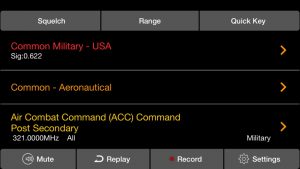The BC-SGPS kit includes several parts:
- GPS Receiver (small box)
- Adapter Box (larger box)
- SDS200 cable (Phone wire)
- USB-Mini Cable (DB-9 to USB-Mini)
- Handheld Scanner Cable (DB-9 to Uniden Serial plug)
- Mobile Scanner Cable (DB-9 to DB-9)
- Automotive Plug power cord

For All GPS enabled scanners:
- Make sure that the GPS Baud Rate on the scanner is set to 9600 Baud. The default rate on the scanner might be set to 4800, be sure you adjust it to 9600 when using this device. The rate is set in the Settings Menu on your scanner, please refer to the Owner’s Manual for the specific method of adjusting this on your scanner.
- For non-database scanners as well as when using Favorites Lists on scanners with the built-in database you must have Location Control enabled and a proper set of GPS Coordinates (Latitude and longitude)
- Use ONLY the power cord that comes with the kit, it includes a voltage reduction device to provide the proper voltage for the adapter box. It will not power scanners other than the SDS100 and BCD325, and then only when used with the adapter box and GPS.
SDS200
Connect the Phone wire cable from the GPS receiver directly to the GPS port on the back of the scanner. No other cables are needed.

SDS100 and BCD325P2 scanners:
Connect the GPS Receiver to the Adapter Box with the grey Phone Cable then connect the Adapter Box to the scanner’s USB Mini port with the USB-Mini cable. Plug the Adapter Box into a cigarette lighter socket in the car. This will power the radio along with the GPS.

BCD536HP, BCD996 series and BCT15 series scanners:
Plug the GPS Receiver to the Adapter Box with the grey Phone Cable, then use the DB-9 to DB-9 Mobile Cable to connect the Adapter Box to the rear Serial Port of the scanner. This will NOT power the scanner.

HomePatrol 1 & 2 Scanners:
Connect the GPS Receiver to the Adapter Box with the grey Phone Cable, then use the Handheld Scanner Cable between the Adapter Box and the GPS Port on the right side of the HomePatrol scanner. This will NOT power the scanner.

Handheld scanners (BCD436HP, BCD396T and XT, BC346) Connect the GPS Receiver to the Adapter Box with the grey Phone Cable, then use the Handheld Scanner Cable between the Adapter Box and the GPS Port on the right side of the HomePatrol scanner. This will NOT power the scanner.




